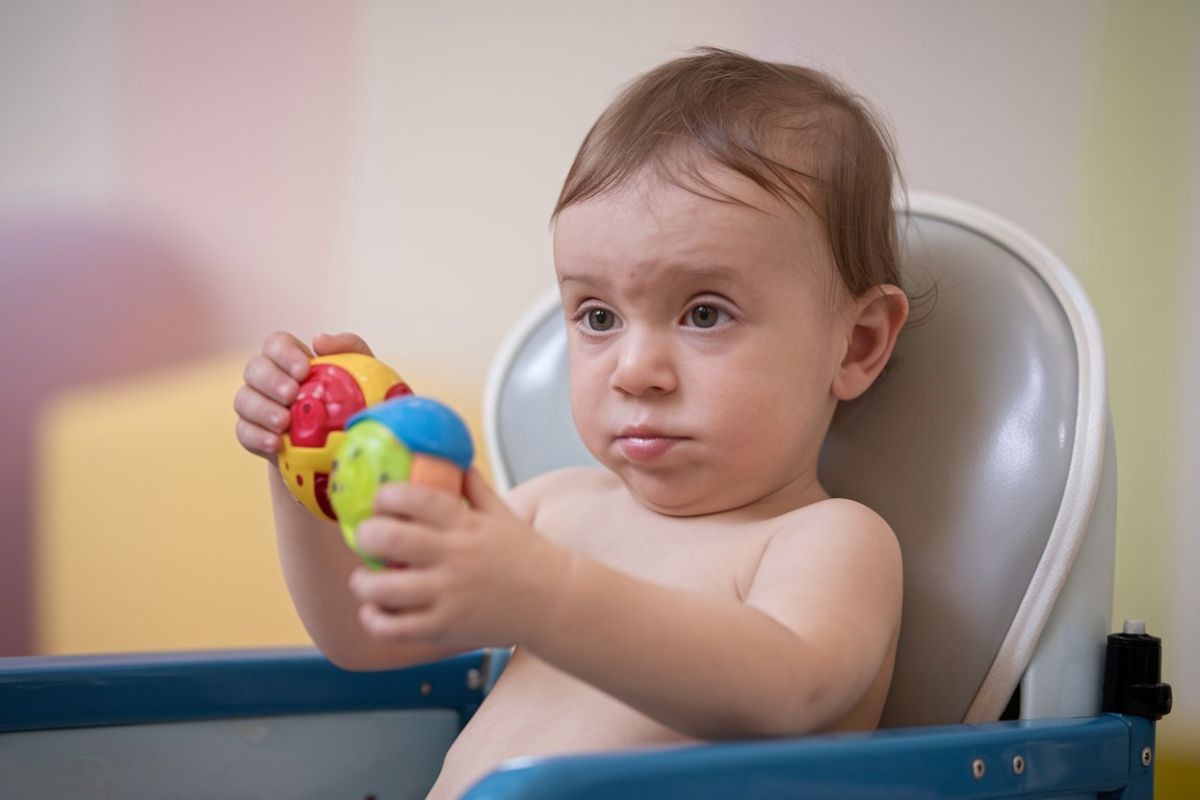
Developmental delay hypotonia extremities hypertrophy can sound like a mouthful, but understanding it is crucial for anyone dealing with these conditions. Developmental delay refers to when a child lags behind their peers in reaching milestones. Hypotonia, or low muscle tone, often makes movement and coordination challenging. Extremities hypertrophy means an abnormal increase in muscle size, usually in the arms or legs. These conditions can appear together or separately, affecting a child's growth and daily life. Knowing the facts can help parents, caregivers, and educators provide better support. Let's dive into 30 key facts that will shed light on these complex terms and their impact.
Key Takeaways:
- Developmental delay can affect a child's ability to walk, talk, and interact. Early intervention and therapy play a crucial role in helping children reach their milestones and improve their quality of life.
- Hypotonia, or low muscle tone, can impact posture, movement, and coordination. Physical therapy and regular exercise are essential for improving muscle strength and managing symptoms.
Understanding Developmental Delay
Developmental delay refers to when a child does not reach their developmental milestones at the expected times. It can affect various areas such as motor skills, speech, and social interaction.
- Developmental delay can be caused by genetic factors, complications during birth, or environmental influences.
- Children with developmental delay might take longer to learn to walk, talk, or interact with others.
- Early intervention can significantly improve outcomes for children experiencing developmental delay.
- Developmental delay is often diagnosed through a combination of medical history, physical exams, and developmental screenings.
- Therapy, including physical, occupational, and speech therapy, is commonly used to help children with developmental delays.
Exploring Hypotonia
Hypotonia, or low muscle tone, is a condition where muscles feel floppy and lack strength. It can affect posture, movement, and coordination.
- Hypotonia can be present at birth or develop later in life due to various conditions such as Down syndrome or muscular dystrophy.
- Babies with hypotonia might have difficulty holding their head up or sitting without support.
- Physical therapy is crucial for improving muscle strength and coordination in individuals with hypotonia.
- Hypotonia can impact feeding and speech due to weak muscles around the mouth and throat.
- Regular exercise and activities that promote muscle use can help manage hypotonia symptoms.
Impact on Extremities
Developmental delay and hypotonia can significantly affect the extremities, including arms and legs, leading to challenges in movement and coordination.
- Extremities affected by hypotonia may appear floppy and lack the usual resistance to movement.
- Children with hypotonia might struggle with fine motor skills, such as writing or buttoning clothes.
- Orthotic devices, like braces or splints, can provide support and improve function in affected extremities.
- Regular stretching and strengthening exercises are essential to maintain flexibility and muscle tone.
- Occupational therapy can help children develop the skills needed for daily activities involving their extremities.
Understanding Hypertrophy
Hypertrophy refers to the enlargement of an organ or tissue due to the increase in the size of its cells. In the context of developmental delay and hypotonia, it can sometimes occur as a compensatory mechanism.
- Hypertrophy in muscles can occur when other muscles are weak, causing the stronger muscles to overcompensate.
- This condition can lead to imbalances in muscle strength and coordination.
- Hypertrophy is often monitored through regular medical check-ups and physical assessments.
- Balanced exercise routines are important to ensure all muscle groups are developed evenly.
- In some cases, hypertrophy can cause discomfort or pain due to the uneven distribution of muscle strength.
Genetic Factors
Genetics play a significant role in developmental delay, hypotonia, and hypertrophy. Understanding these factors can help in diagnosis and treatment.
- Genetic factors can include inherited conditions like Down syndrome or Prader-Willi syndrome.
- Genetic testing can help identify specific conditions that cause developmental delays and hypotonia.
- Family history is often considered when diagnosing genetic causes of these conditions.
- Genetic counseling can provide families with information about the risks and implications of genetic conditions.
- Research is ongoing to better understand the genetic basis of these conditions and develop targeted treatments.
Early Intervention and Therapy
Early intervention is key to managing developmental delay, hypotonia, and hypertrophy. Various therapies can help improve outcomes.
- Early intervention programs often include a team of specialists such as physical therapists, occupational therapists, and speech therapists.
- These programs are designed to address the specific needs of each child and promote development.
- Consistent therapy can help children achieve milestones and improve their quality of life.
- Parents and caregivers play a crucial role in supporting therapy and practicing exercises at home.
- Community resources and support groups can provide additional assistance and encouragement for families.
Final Thoughts on Developmental Delay Hypotonia Extremities Hypertrophy
Understanding developmental delay hypotonia extremities hypertrophy can be challenging, but knowing the facts helps. This condition affects muscle tone, strength, and growth, leading to unique challenges. Early diagnosis and intervention are crucial for improving outcomes. Physical therapy, occupational therapy, and sometimes medication can make a significant difference. Parents and caregivers should stay informed and work closely with healthcare providers to create the best care plan. Support groups and resources can offer additional help and encouragement. Remember, every child is unique, and progress may vary. Stay patient and positive, celebrating small victories along the way. With the right support and strategies, children with this condition can lead fulfilling lives. Keep advocating for your child's needs and never hesitate to seek professional advice when needed.
Frequently Asked Questions
Was this page helpful?
Our commitment to delivering trustworthy and engaging content is at the heart of what we do. Each fact on our site is contributed by real users like you, bringing a wealth of diverse insights and information. To ensure the highest standards of accuracy and reliability, our dedicated editors meticulously review each submission. This process guarantees that the facts we share are not only fascinating but also credible. Trust in our commitment to quality and authenticity as you explore and learn with us.


